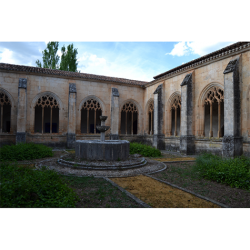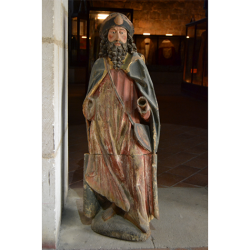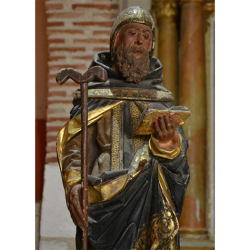Catalogue
THE ALTARPIECE OF THE SAINTS
HISTORY
The first location of this altarpiece is unknown. Some bibliographical references suggest that it was moved to the museum from one of the small chapels in the cloister, however no written reference confirming this suggestion has ever appeared. Given the fact that the cloister dates from the XVI century (having been built between 1528 and 1535), in addition to the fact that no side chapel currently gives onto it, we can only suppose that popular tradition might refer to some part of the Romanesque cloister that previously stood on the spot, but which has since disappeared completely. Alternatively, the more probable explanation is that the altarpiece's original destination was a completely different one.
Two figures - the figures of Saint James the Apostle and Saint Anton - were added to the altarpiece's rather ambiguous iconography from other sources, which prevents us confirming to which saint the altarpiece was originally dedicated (the narrow unguilded niche to the rear of the centre section of the altarpiece suggests it was used to hold the missing figure of the altarpiece's patron saint). Had we been able to identify this saint, then it would have proven most useful in our establishing both the original location of the altarpiece and the reason for its appearance in Covarrubias.



